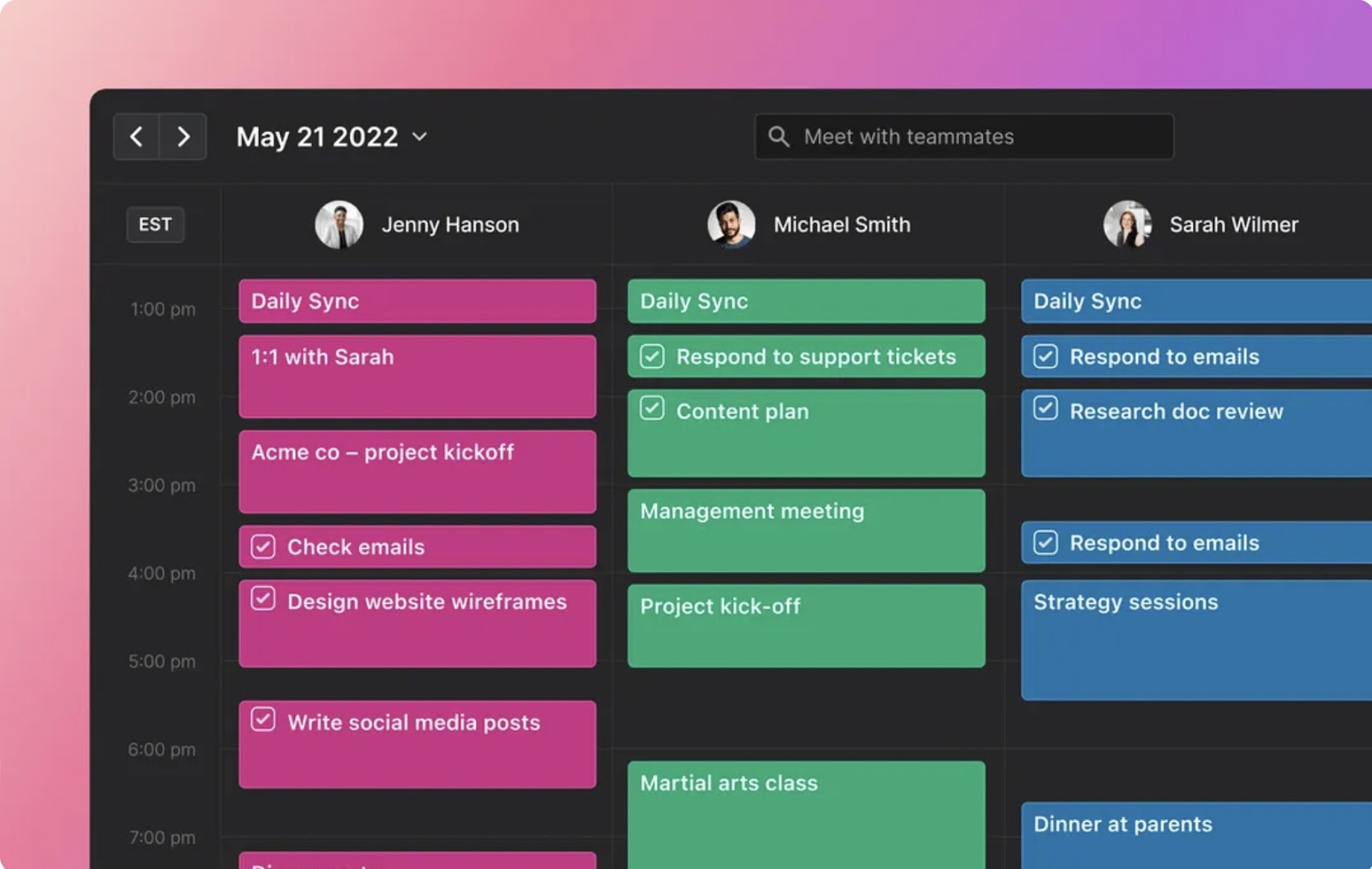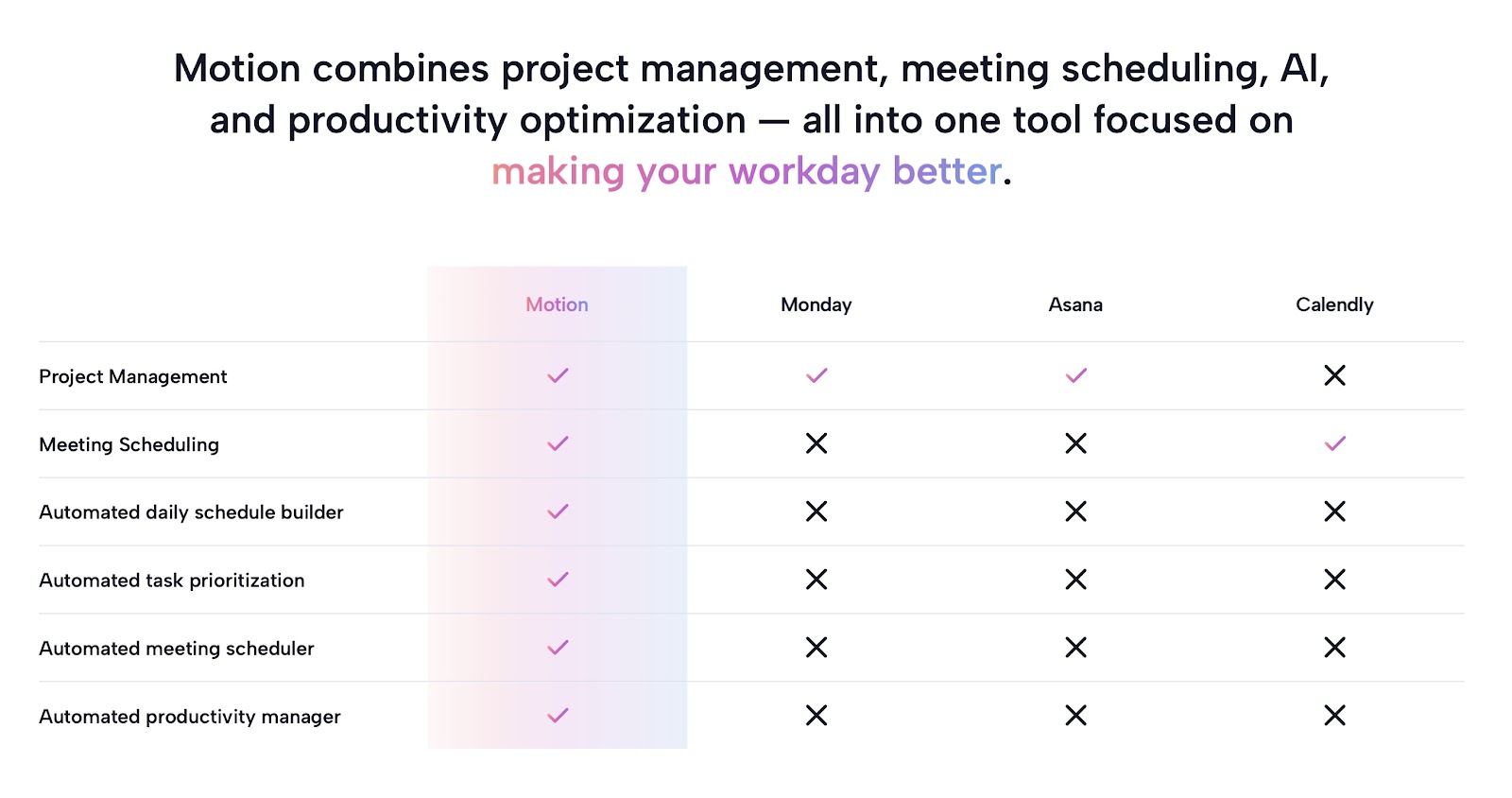Managing a remote team can be daunting.
Though you’ve adapted to having your employees work from home, you’re still grappling with how to support your team, encourage collaboration, and increase productivity — all from behind a computer screen.
In this article, we’ll explore the challenges of remote work, share nine practical tips to help you become an effective remote manager, and reveal a revolutionary tool that can streamline your workflow.
Let’s get started.
What are the challenges of managing a remote team?
Managing a remote team requires strong communication and leadership skills, patience, and adaptability.
For some managers, the challenges of leading a remote team can become very overwhelming. Let’s delve into some of these challenges below.
Managing performance
Managing performance in a remote team can be complex, as it relies on effective communication, trust, and the ability to provide feedback and support from a distance.
Challenges in managing performance include the following:
- Limited visibility into employee work progress
- More distractions and interruptions
- Building trust and rapport
In 2023, Disney backtracked on their “work from home” policy and is now enforcing a “4 days in office” policy due to their employees being unable to carry out vital aspects of their jobs from home.
When working with remote employees, guaranteeing that each team member has access to the required tools and a suitable work environment is challenging.
Strategies to overcome this include the following:
- Establishing clear performance metrics
- Creating communication guidelines
- Scheduling regular performance check-ins
Communication
Clear communication is the foundation of good management.
But what happens when relaying information to an employee isn’t as simple as knocking on their office door?
Communication is a challenge for remote managers, as it requires intentional effort. Most remote teams rely on technology to communicate, which can lead to misinterpretations if not correctly handled.
For instance, delays in receiving feedback or answers to questions can be frustrating for remote team members, as they might experience setbacks in work production as a result.
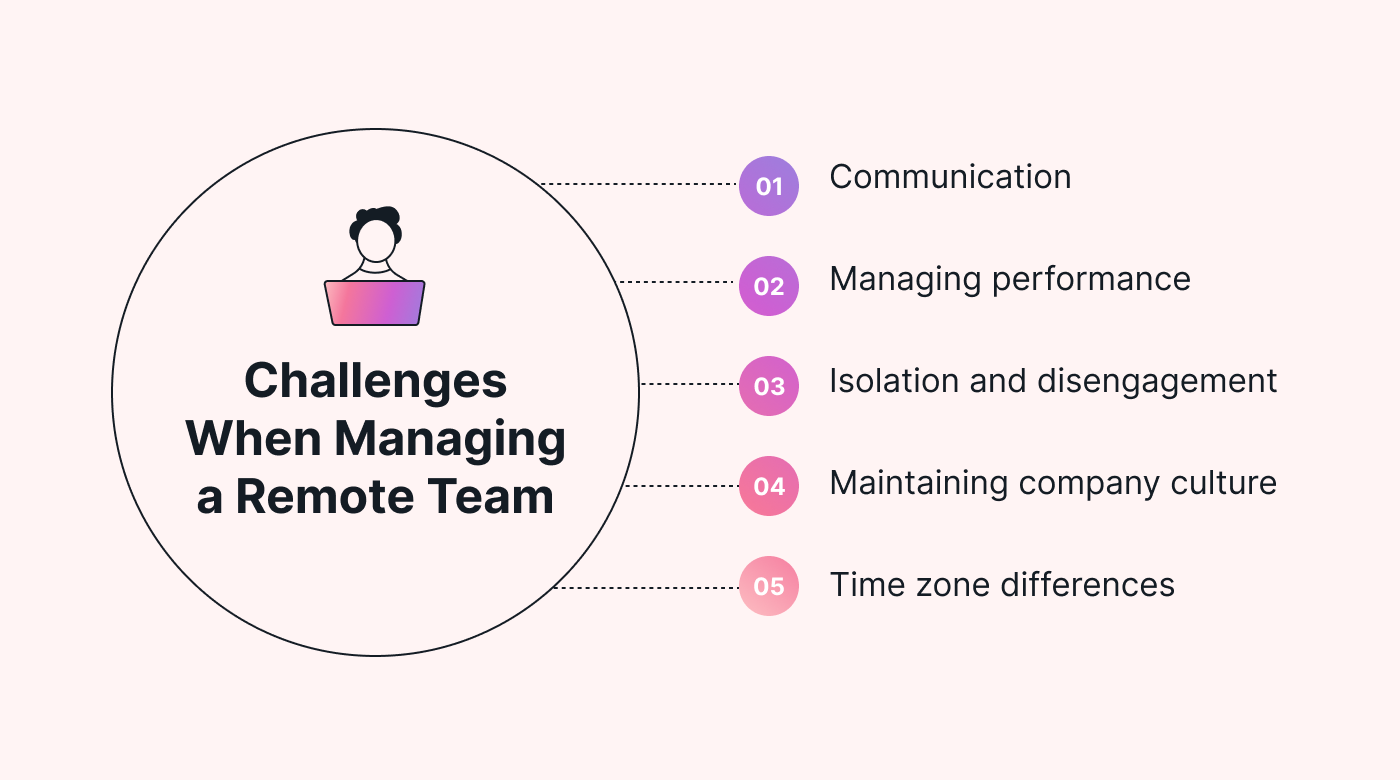 |
Without a reliable communication system, these delays can quickly cut into business profits.
Maintaining company culture
Maintaining a strong company culture can help attract talent and increase an entire team’s engagement and satisfaction.
In fact, according to a 2022 study, 66% of executives believe company culture is more important than a business’s operational model or business strategy.
Unfortunately, remote work environments can make promoting social interactions and company values difficult. Traditionally, physical office events, like daily coffee runs and work parties, are used to increase team bonding without requiring additional personal time.
So how can you maintain company culture with a remote team?
Try this:
- Create virtual group hangouts
- Schedule online team-building activities
- Encourage collaboration between team members
Isolation and disengagement
Feelings of isolation and disengagement can be severe for remote team managers.
Working remotely 100% of the time often creates a disconnect between managers and team members — a disconnect that can lead to reduced motivation and productivity throughout the workday.
To address these challenges, remote team managers should take proactive steps to build strong relationships with their team members. This can involve learning employees’ career goals and ideal work environment so that the manager can provide them with opportunities for professional development and career growth.
The importance of prioritizing work-life balance and creating a supportive work environment for remote team members cannot be underestimated.
According to a 2021 case study, “…managers and employees worldwide should view flexible work arrangements as a positive tool to enhance employee productivity.” This research also found that flexible working opportunities increased employee satisfaction.
Time zone differences
One of the most significant issues in managing a team that works from around the globe is time zone conflicts.
In 2021, musical giant Spotify adopted a policy allowing employees to “work from anywhere.” While this created flexibility for workers, it also meant that they were working at different times of the day.
Time zone differences can have the following impacts on virtual teams:
- Difficulties scheduling real-time communication, such as video meetings and video chats
- Unequal workloads
- Expectation of remote employees to work extreme office hours
How do you manage a remote team effectively?
In September 2022, it was reported that 21.6 million US citizens spent five days working from home.
Managing a remote team relies on your ability to identify the challenges your remote team faces and develop effective strategies to overcome them.
What skills do remote managers need?
To give your team the best chance at success, you need to use your existing project management skills and combine them with new remote management strategies.
The most sought-out skills in remote managers are as follows:
- Communication
- Leadership
- Technical proficiency
- Time management
- Emotional intelligence
- Adaptability
How to manage a remote team in terms of leadership styles
Leading remotely requires a different management style. That’s why assessing which leadership style will work best — rather than making any presumptions — is essential.
The following are the most popular leadership styles:
- Transformational: a management style that involves inspiring and motivating team members to bring change and progression to your company.
- Servant: a style based on the idea that a manager should prioritize the needs of team members and focus on fostering trust, respect, and empathy. For example, Herb Kelleher, founder of Southwest Airlines, uses this leadership style by “developing his followers” and treating employees as equals.
- Situational: promotes the idea that managers should regularly tailor their leadership style to suit the needs of individuals and the situation at hand.
- Laissez-faire: involves delegating decision-making power to team members and giving them autonomy to complete tasks with little guidance or direction. For example, Warren Buffet is famous for his “hands-off” approach and for allowing company owners to operate independently.
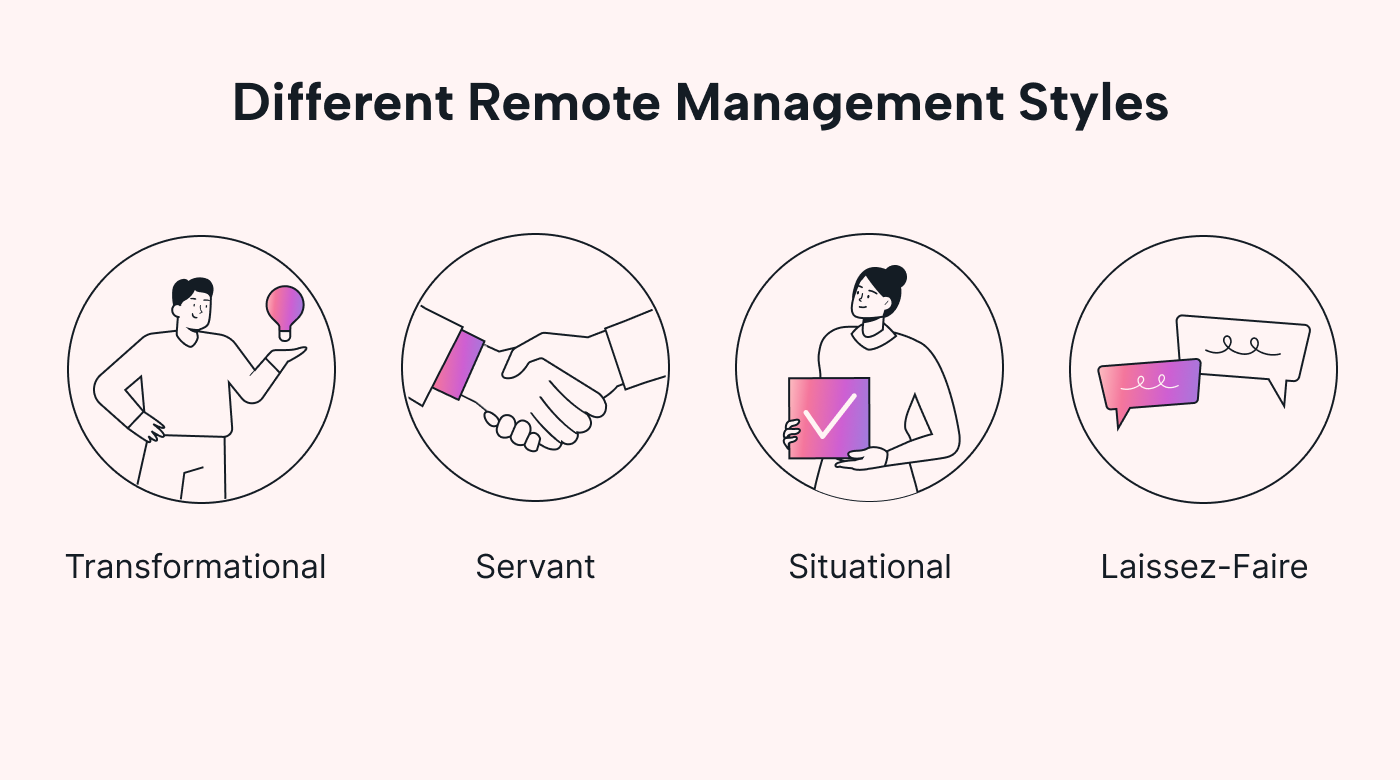 |
For a team that’s highly skilled, experienced, and comfortable communicating online, a laissez-faire approach may work best. On the other hand, a team of young creatives who value open communication, collaboration, and empathy may respond better to a servant leadership style.
Assess the components of each leadership approach carefully, and ask yourself which one suits your managerial style and could benefit your entire team.
9 tips for managing remote employees
Here are nine tips you can use that’ll immediately make you a more considerate remote team manager:
1. Establish clear communication channels
Set up communication channels so your team knows exactly how to contact you and each other at all times.
If a member of your team has a problem, there should be a communication strategy in place so they know who to contact and how to do so.
The communication channels you should set up include the following:
- Video chats and meetings
- Video conferencing
- Instant messaging
Formal virtual meetings
2. Schedule regular check-ins
Scheduling daily check-ins or weekly catch-up sessions is crucial to ensuring remote workers feel recognized and supported.
It’s also a strategic way for remote managers to address any challenges that may halt workflows or slow down production.
Discuss the following during check-ins:
- Feedback on assignments
- Concerns about workload
- Employee well-being
3. Offer opportunities for professional development
As of 2023, employers believe 44% of workers’ skills “will be disrupted in the next five years,” according to the World Economic Forum.
That’s why it’s important to provide opportunities for team members to develop their skills and knowledge.
Here’s how to do this:
- Offer up-skilling training programs
- Invest in mentoring classes
- Survey what skills your employees feel they’re lacking
4. Set clear expectations
Adhering to procedures can reduce the stress remote workers experience when starting a new project, asking questions, or submitting work. It can also help remote workers better understand what’s needed to produce high-quality work.
You can set clear expectations as follows:
- Define goals and objectives for each role and project
- Provide written policies for work hours, response times, and communication channels
- Avoid setting unrealistic expectations
5. Use project management tools
A project management tool can help track your team’s progress, assign tasks, and manage deadlines in one place.
An industry-leading software like Motion can streamline workflows and simplify communication and collaboration between team members.
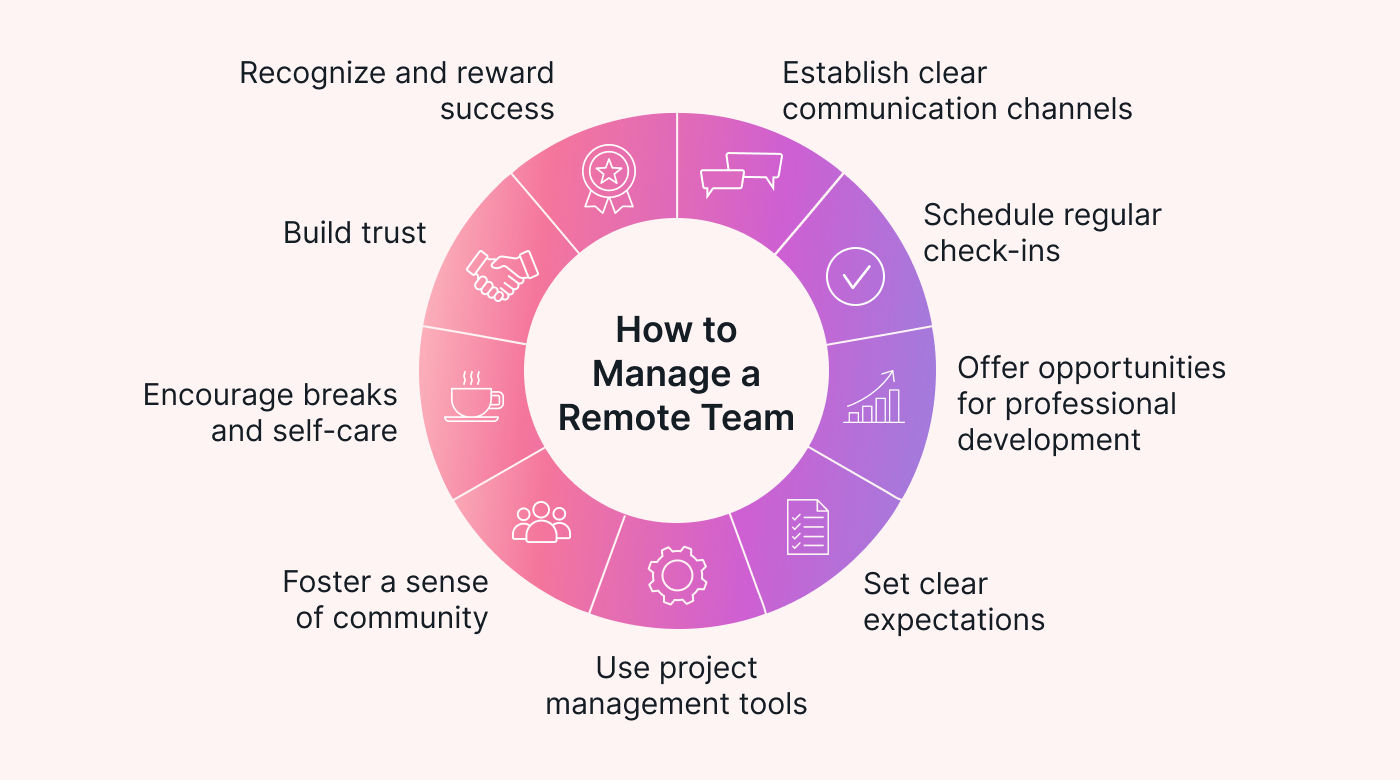 |
Here’s what to look for in a project management tool:
- Time tracking software
- Mobile accessibility
- File sharing
- User-friendly interface
6. Foster a sense of community
A 2021 study found that 54% of employees value collaborative leadership in organizations.
Even if you don’t bump into your colleagues in the hallway, you’re still part of a team working toward the same goal. A strong sense of community reminds remote workers that they play an important role in your company.
Some team-building ideas include the following:
- Virtual coffee breaks
- Online book club
- Group fitness challenges
- Online volunteering
7. Encourage breaks and self-care
Working for long stretches without a break, losing sleep, and stressing over deadlines can reduce productivity and the quality of the work produced.
To maintain a consistent level of productivity, encourage your team to take regular breaks and practice self-care.
Examples of self-care practices include the following:
- Performing deep breathing exercises
- Doing some light exercise in between work hours
- Only checking notifications during specific times during the day
8. Build trust
As a manager, you can’t know what your remote workers are doing at any given time or how they’re approaching their work.
Therefore, building trust with them is essential to maintaining a productive and successful work environment.
Here are some ways to do this:
- Be transparent about your expectations of each team member
- Ensure you’re available to answer any questions or concerns that may arise
- Be responsive to your remote employees’ needs, and address any issues that arise in a timely and respectful manner
9. Recognize and reward success
Only 43% of employees are completely satisfied with the amount of feedback they receive on their work tasks.
One way to overcome this issue is by celebrating and rewarding the successes of each employee and your team.
Some strategies for doing this include the following:
- Publically announce a worker’s achievements in a virtual team meeting or chat
- Celebrate milestones like completing a project for a big client
- Offer incentives, such as gift cards or bonuses, for those who achieve exceptional results
3 common mistakes managers make with remote teams (& how to avoid them)
Managing a team remotely is still a new practice. As such, many managers are making common mistakes.
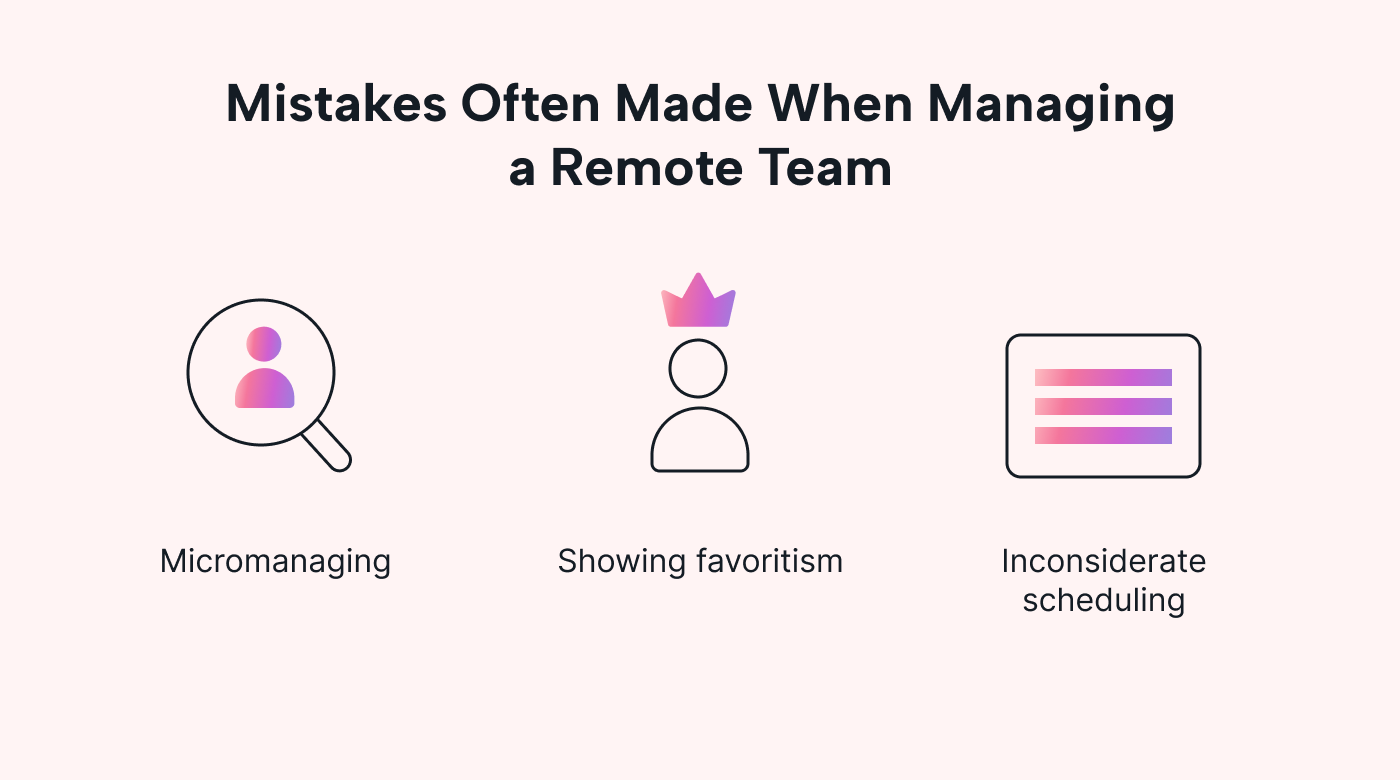 |
Luckily for you, we’ve listed them here, along with some tips on what you should do to avoid them.
1. Micromanaging
One common mistake managers make is micromanaging, which leads to reduced efficiency and employee disengagement.
While managers may feel a lack of control over their remote team’s work and output, remote work can actually increase productivity.
In fact, a study in 2023 found that remote work can save workers approximately 72 minutes per day.
You can avoid this mistake by doing the following:
- Focusing on the outcomes and results rather than the process they use to get there
- Providing training tools, access to information, and guidelines that demonstrate the most efficient way to perform a task
2. Showing favoritism
Unfortunately, some managers are offering in-office workers more opportunities for career growth by giving them more face-to-face time.
Obviously, this is incredibly unfair to remote workers. It can lead to feelings of hostility and create an unhealthy work environment.
Here’s how you can avoid this mistake:
- Set the same expectations and standards for all employees
- Ensure that work is being distributed evenly
- Avoid spending too much time with any individual employee
3. Inconsiderate scheduling
Just because an employee works remotely doesn’t mean they’re available 24/7. In 2021, a survey discovered that 21% of people quit due to inflexible work conditions.
To be an effective remote manager, it’s crucial to consider your workers’ different time zones and ensure they can enjoy a work-life balance.
You can avoid the mistake of inconsiderate scheduling as follows:
- Provide notice of meetings and deadlines so team members have enough time to prepare and adjust their schedules accordingly
- Use scheduling tools with a shared calendar feature to avoid conflicts
- Be flexible and accommodating to your employees’ needs
How does remote team management software improve collaboration and productivity?
About 75% of employees rate collaboration and teamwork as being very important.
Team management software can increase productivity and enhance collaboration by:
- Centralizing communication
- Automating repetitive tasks
- Streamlining task management
- Facilitating remote meeting
- Encouraging employee feedback
What is the best remote team management software?
Call us biased but we believe Motion is the best team management software for remote team managers.
Here’s why:
- It uses AI to optimize your team’s workflow and prioritize tasks based on importance
- It allows you to see other team members’ calendars to schedule the best time for virtual meetings
- With it, you can easily add a series of new tasks and share and assign them to the appropriate team members
Are you ready to be a great remote manager?
While managing a remote team may not be easy, it’s a great opportunity to foster a culture of trust, communication, and collaboration. By implementing the above tips, you can help your team members stay productive, engaged, and connected.
Remember, a good remote manager sets clear expectations and communicates effectively, but a great remote manager also prioritizes team well-being and work-life balance.
The simplest way to streamline communication and task management is by using a team management software like Motion. With features such as real-time collaboration, project tracking, and team analytics, Motion can help you stay on top of your team’s progress and performance.
Motion gives new users a 7-day free trial, so make use of the opportunity and see for yourself the impact it will have on your team.


